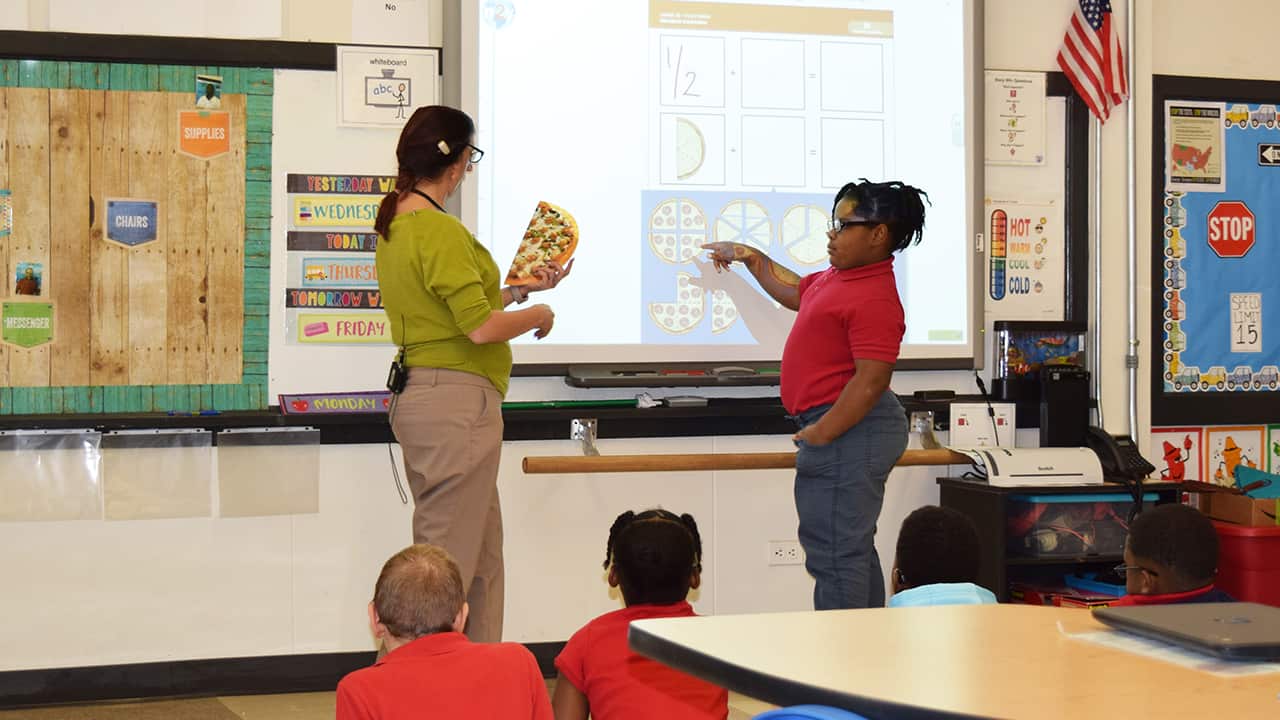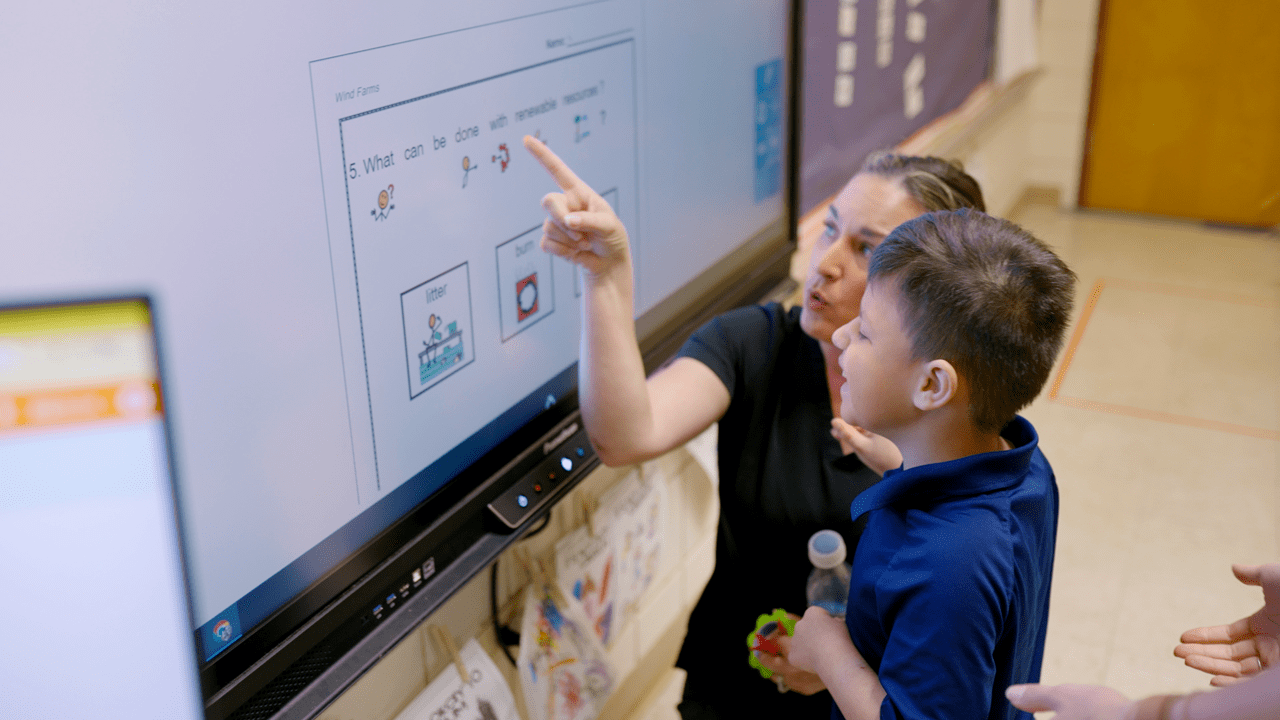Additional considerations may need to be made during a time of remote learning, as students’ needs are impacted by it. There may be limitations in how information can be presented, differences in how a student can interact with the information provided, and adjustments needed to the way you can provide those additional supports.
Begin by Looking at Your Student’s IEP
A key resource for planning for differentiation is the IEP. As a starting point, it gives an indication of what strategies have been successful in the past. Assessment summaries and information on a student’s present levels of performance can give an indication of what level your student is currently performing at. And the IEP goals and objectives can be a roadmap for where your student should be going. Also, the goals can provide useful information about what types of additional supports may be required for your student to reach a specific target.
As an example, let’s look at the skill of answering “Wh” questions about texts. Responding to basic “Wh” questions (who, what, when, where?) is a building block of reading comprehension and is part of the foundation of ELA reading standards throughout the grade levels. Consider how to differentiate a lesson on this skill based on the presentation of the information, the student’s means of expressing the answer or interacting with the materials, and what additional layers of support could be provided to increase your student’s independence.
How to Decide on Presentation
For some students, success starts with the method that helps them best understand the text itself. Some respond well to listening, and others comprehend better when they read a text themselves. Still others benefit from audio combined with visual input (like an online read-along). In a remote learning setting, the options for audio and audio‑visual books are plentiful.
From there, consider how the “Wh” questions will be presented to the student. Are they being asked orally? Are the questions in writing? Can they be presented digitally to support online learning? Would pictures or images help to support your student’s understanding of what is being asked? If presented on paper, can the student see all questions at once, or one question at a time?
And lastly, think about how to present options for student responses. Giving multiple response options can be a way to support your student in generating an answer, but be sure to provide the number of options that best match your student’s level of understanding. For more concrete learners, have them select from only two choices. For students who can select from a broader range, offer three or four choices. For students who can process an array of options, perhaps a board or list with multiple response options is best.
Think about how to vary the options as well. Your student could choose from two options within the same category (“Who is the going to the playground? Annie or Teddy?”), or from responses from differing categories (“Where is she going? Playground or raincoat?”). By providing response options from different categories, you can determine your student’s comprehension of the “Wh” word itself. In other words, does your student understand that when asked “who?” the response is typically a person, animal, or character?
Ways to Take Student Response into Account
Once you have thoughtfully planned how to present the text, the questions, and possible responses to your student, think about how they will indicate a response or interact with the materials. If responding orally, would they feel more comfortable responding to a peer or an adult? Think about the different ways a student can interact with materials when not answering orally. A written response could be a word, a phrase, a complete sentence, or a paragraph with supporting details. If your student prefers drawing, this may be a motivating way to share a response. A whiteboard can be used to jot down and present a quick response and is a useful tool both in the classroom and in a remote environment.
If pictures and word cards are used to present questions and choices, vary the way your students interact with these materials by having them match, point to, or give a response card to another person. When presenting the questions on paper, or even to the whole group on a SMART Board, allow different students to respond in varied ways. Ask some to circle a correct response and others to underline it, use a check mark, cross out the incorrect answers, or use a preferred color to highlight the answer. If responses are presented on-screen for those learning at home, pair each response option with a number and have the student indicate their answer as they are capable.
Tips for Adding Layers of Support
Throughout the lesson, be thoughtful about how additional supports can increase your student’s success. If they need support in understanding the meaning of “Wh” words themselves, then a visual cue to clarify the meaning of each word could be useful. This could take the form of a reminder card, graphic organizer, simple icon, or picture to pair with each “Wh” word within the question. A graphic organizer can be displayed on-screen for students learning at home and can serve as a concrete, visual reminder of each word. Again, look to see if a specific IEP goal requires the use of a particular strategy or practice. It may give an indication that the student should receive prompting, reinforcement, or modeling, for example. Goals can also indicate a condition in which the student must learn or perform a skill, such as 1:1 instruction, small group, or partner work.
One final consideration in planning for differentiation is to look for ways to offer choices to students when possible. This is especially valuable in a remote learning setting, as they often need additional motivation to stay engaged. Students may be able to express a preference or strength that had not been previously considered. And they can often express what is working well for them at home when you may not otherwise be able to observe it. Student input can allow you to tailor instruction in a way that matches their preferred learning style while increasing their motivation and engagement. And when students are empowered, they have a greater chance of success.



